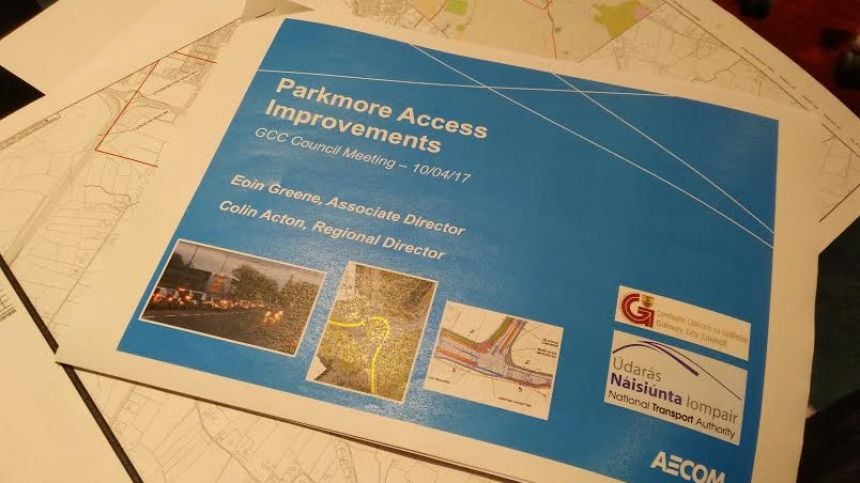Galway Bay fm newsroom - A special meeting to discuss progress on tackling Galway's chronic traffic problems has concluded at City Hall this evening (10/04).
The purpose of the meeting was to brief councillors on what measures are being taken in the short and longer term to alleviate the traffic chaos facing commuters on Galway's roads.
There's been a mixed reaction to the presentation on making the best use of Galway's roads - with one councillor comparing the challenge with attempting to fit a litre of water into a pint glass.
Some of the main bottlenecks identified and discussed at this afternoon's meeting are the evening traffic at Parkmore, morning traffic on the N6 westbound and traffic on the Monivea and Doughiska roads.
The presentation given to councillors outlined a number of short - or 'quick win' solutions - as well as longer term measures which are currently being undertaken or are in advanced stages of development.
It made note of the limitations of public transport in addressing the crisis - in particular at Parkmore, where almost 80% of all commuter journeys are undertaken by car, 10% by public transport and just 4% by car pooling.
This figure was the focus of several comments by those in attendance - with Councillor Peter Keane remarking that they were fighting a losing battle if that figure could not be increased.
Nonetheless, planners say they're ahead of schedule with regards to short term measures, which include capacity improvements at Lynch Junction and Parkmore Junction - changes made to date have had a positive improvement of between 4 and 15% on evening traffic flow.
Further plans in the short term include the widening of the Parkmore West left turn lane as well as cycle lane - along with a realignment of the Doughiska junction and an improved bus timetable.
In the longer term, planners say road links are not the main issue and that certain junctions are key to tackling Galway's traffic congestion issues.
They're hoping to introduce major improvements at Lynch and Parkmore junctions - including the provision of extra lanes and a new signalised junction at High Road/Monivea Road.
On the Parkmore Road, the emerging proposal calls for extra dedicated lanes to be introduced for public transport as well as dedicated cycle lanes.
Planners say Parkmore Roundabout at Parkmore West will likely be signalised.
Also within the transport strategy is an objective to establish park and ride facilities on both sides of the city - but while Galway Airport is being touted as a potential site for Galway East, no site has yet been identified for Galway West.
The extensive range of measures discussed this afternoon received a less than favourable reception from councillors, many of whom felt no real solutions were being brought to the table.
Councillor Ollie Crowe said that Galway is being 'shut down' by the current traffic crisis - and argued that many of the measures were too little, too late to resolve the situation.
Councillor Mike Crowe compared the situation to attempting to pour a litre of water into a pint glass - and his warning that many of the proposed solutions would simply push the problem elsewhere in the network was echoed by several of his colleages.
However, he agreed that changes made at the Briarhill junction have made a notable improvement in the evenings, a sentiment shared by his colleague Councillor John Walsh.
Councillors were unanimous in agreeing that a greater provision of public transport has a major role to play in solving the traffic crisis that has reduced Galway's roads to a painful crawl.
Other ideas raised at the meeting include the re-examination of a light rail system for Galway, the introduction of a city-wide carpool system and free school transport.
Planners hope to have the list of short term measures discussed at today's meeting fully completed by the end of this year.
The longer term measures aimed at relieving pressure on Galway's road network will not likely proceed to construction stage until late 2018.







